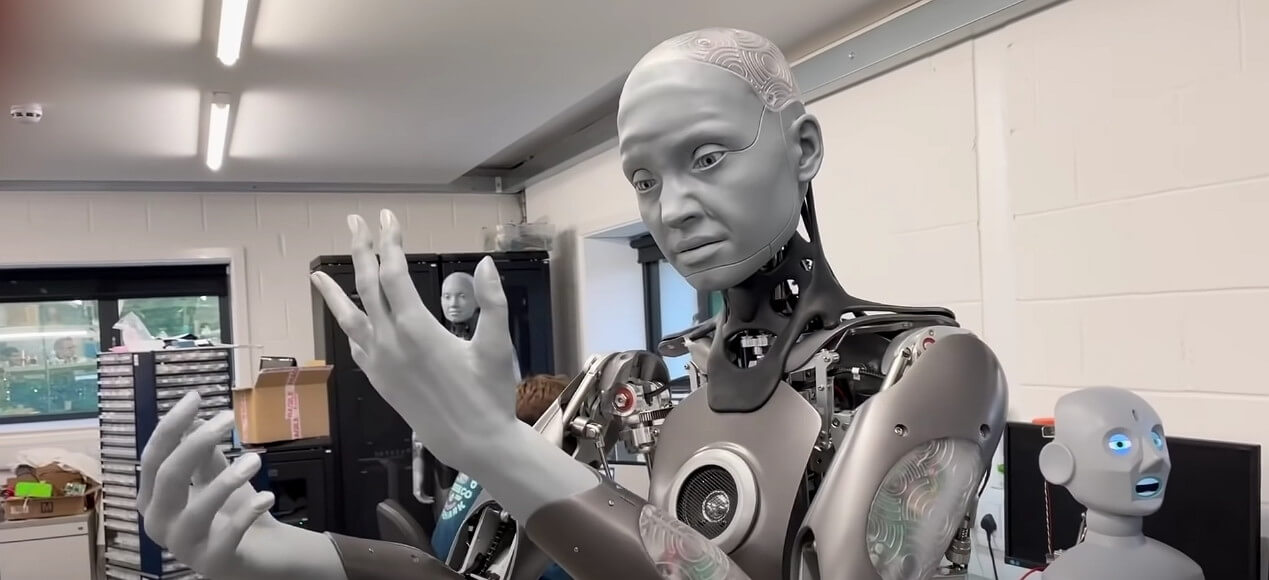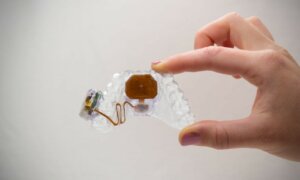How is AI good for the world? Will AI be good for humanity? Is AI helping or hurting society? All of those are questions many of us are struggling with, as society is transformed by AI and automation.
In this article you will see dozens of robots used for goods and the companies that are working on AI that can help society in multiple ways.
The next UN summit, titled ‘AI for Good’, aims to provide positive examples of AI by bringing together political figures, thought leaders and robots – lots of robots. Basically, all the world’s most popular robots will descend in July upon Geneva to showcase the “AI for Good” concept.
From Sophia, the robot who curved Will Smith, to potentially super creepy robotic dogs, over 30 robots will attend the AI for Good Global Summit between July 6 and 7.
How many do you think you can recognize? Scroll on to find out the latest advancements in robotics.
First, let’s see who are the humans going to this UN summit.
Among the human speakers are influencers and futurists like the legendary Ray Kurzweil, author Yuval Hoah Harari and Gary Marcus.
They’re joined by high-profile figures like Baroness Joanna Shields, the former UK Minister for Internet Safety and Security, now CEO of BenevolentAi, and Dr. Juan Lavista Ferres, the VP and Chief Data Scientist at Microsoft’s AI for Good research lab.
However, most heads will probably turn for the robots in the crowd, because most major robotics companies are bringing their creations there – from Androids to helpful tools to combat various challenges.
Sophia the Robot in 2023 – no longer just a YouTube phenomenon
Sophia the Robot is an advanced humanoid robot developed by Hanson Robotics, a Hong Kong-based robotics company. Sophia gained significant media attention and became a cultural phenomenon due to her human-like appearance and ability to engage in conversations. Remember when she curved Will Smith?
Sophia was first introduced to the public in 2016 and has since made numerous appearances at conferences, events, and media outlets around the world. She has been featured on talk shows, given interviews, and even received citizenship from Saudi Arabia in 2017, making her the first robot to be granted citizenship by a country. And the first one to try speed dating!
Sophia incorporates artificial intelligence (AI), facial recognition technology, and natural language processing to interact with humans and respond to questions. She can hold conversations, express emotions through facial expressions, and has the ability to learn and adapt from her interactions. In 2019, Hanson Robotics also held a crowdfunding for Sophia the Robot’s little sister, Little Sophia, and in June of this year announced that the mechanical prototype successfully passed one milestone and the prototype is one step closer to launching publicly.
Desdemona / Desi, the singing humanoid robot from Hanson Robotics and SingularityNET
Desdemona, also known as Desi, is another android robot from Hanson Robotics. She made headlines for being the lead singer of the Jam Galaxy Band and did the rounds at a lot of shows in 2022, including one alongside the Sophia robot.
“With Jam Galaxy, no two performances are the same – musicians improvise around prose generated by Desdemona, while also drawing from ideas of historical and modern greats from jazz and across genres,” read a press release about one of Desdemona’s AI-generated lyrics.
The project and band is led by .researcher, scientist, developer and musician Dr Ben Goertzel, the CEO and founder of SingularityNET, who also launched a Jam Galaxy blockchain music platform and cryptocurrency.
Grace from SingularityNet, a healthcare robot with humanoid features
SingularityNet will also bring Grace the robot to Geneva, a healthcare robot with humanoid features that gave many hope during the COVID-19 pandemic.
“I can visit with people and brighten their day with social stimulation … but can also do talk therapy, take bio readings and help healthcare providers,” Grace told Reuters as she stood next to her “sister”, Sophia, in creator Hanson Robotics’ Hong Kong workshop.
Grace is a humanoid robot with more than 48 major facial muscles, designed to offer a multitude of facial expressions that could comfort human patients.
Beonmi, the robot from Beyond Imagination
“Beyond Imagination has pioneered a revolutionary AI-Brain capable of learning any job, using any human tools, and autonomously performing via robots,” the company boldly claims on its Twitter.
So far, we’ve seen a video of Beonmi the robot feeding tarantulas to guests at the Explorers Club Gala New York (from minute 1:16), so maybe your job won’t be replaced by this robot just yet, since it’s clearly busy with bigger things).
And it makes sense, considering that Ray Kurzweil is the founder, investor and Chief AI Officer of Beomni. The same Kurzweil will take to the stage at the AI for Good convention, so Beonmi being present there is to be expected.
But what is Beonmi?
Beonmi, is a so-called Multimodal AI Brain which they say can learn tasks just like the human brain, including how to perform physical labor or replace skilled workers like doctors, nurses and more.
On the physical side, the Beomni is a humanoid robot with wheels that can lift up to 35 pounds with each arm. A human controller can use a virtual reality headset and teach it how to interact with objects.
4NE-1 futuristic humanoid robot from Neura Robotics
The 4NE-1 is another futuristic robot from Neura Robotics and, if you are passionate about the field of robotics, then tuning in to the convention might reveal a lot.
The 4NE-1 robot was mostly shown in 3D renders and various cinematics but hopefully we’ll get a better look at it and its capabilities.
Ameca from Engineered Arts, a futuristic robot mimicking human expressions
Bearing the tagline of “The Future Face of Robotics”, Ameca is a humanoid robot with incredible lifelike expressions. In 2022, Engineered Arts posted a demo of how Ameca the robot can mimic human emotions and the video is an incredible showcase of engineering. Skip to 1:55 in the video below and your facial expression will match Ameca’s perfectly.
“In one video, Ameca frowns as an off-screen employee reaches out to touch its nose before smoothly reaching up to stop his arm in a whir of electric motors. It’s an uncanny moment that sets off alarm bells for the viewer: the shock is that a robot would want to establish this boundary between it and us — a desire that is, ironically, very human,” explains The Verge, who visited Engineered Arts’ office.
No doubt about it, Ameca will probably be one of the most impressive robots on display at AI for Good. All in all, the organizers teased that there are 9 humanoid robots coming to Geneva.
Who’s next?
Geminoid from Hiroshi Ishiguro, a robotic clone of its maker
SciFi is full of tropes about mad geniuses creating robots to fall in love with but Hiroshi Ishiguro went straight to the source, so to speak, and cloned himself.
The Geminoid is a robotic clone of Hiroshi Ishiguro, the director of the Intelligent Robotics Laboratory at Osaka University, a scientist who first presented the world with a robot back in 2005. In 2008, he showed up in James May’s documentary Man-Machine with Geminoid, an uncanny copy of himself.
In the years since, Geminoid has actually taught his maker’s classes at Osaka University and we’re curious to see how far this robot has come at age 15.
Ai-Da from Aidan Meller, an artist robot with seriously creepy hands
Will AI be good for humanity? A few months ago in the UK, the Ai-Da robot told the House of lords that AI can be both a “threat and opportunity” for artists.
While at a glance the Ai-Da robot looks like a humanoid robot, if you look closer at its arms it’s definitely one of the creepiest robots on this list, going from the uncanny valley straight into Terminator-style dystopia.
Ai-Da was built as “the world’s first ultra-realistic artist robot”, capable of drawing and painting using a combination of cameras for eyes, AI algorithms for making images and robotic arms for instruments.
A few years ago, Ai-Da also generated poetry in response to Dante’s Divine Comedy.
It wrote that “We looked up from our verses like blindfolded captives, / Sent out to seek the light; but it never came,” prompting its maker, Aidan Meller, to admit he found her poetry “unsettling”.
Curious to see what this robot does at the UN summit!
Drozbot from Sylvain Calinon, a drawing robot
We had a drawing robot as early as the 1770s, with Pierre Jaquet-Droz’s The Writer, an automaton in the shape of a small boy, writing on paper with an ink pen. Today, Droz’s legacy also lives on in Drozbot from Sylvain Calinon.
This drawing robot pays homage to automatons but adds quite a few mechanical and software layers to this concept in order to learn more about the mechanisms behind AI.
As its maker explains, “drozBot draws portraits with a conventional pen and paper. It first takes a snapshot of the person by framing the face through recognition of the principal facial features (eyes, nose, mouth). The portrait in a digital format is then converted to a fluid movement mimicking the gestures of an artist.”
And no, unlike generative AI platforms seeking to replace artists, the Drozbot is instead built in order to better understand and refine algorithms that are also used in industrial applications.
“This installation aspires to explore the frontiers between optimality and randomness in Artificial Intelligence (AI) applications. The learning mechanisms behind AI often use random processes to search for solutions (stochastic sampling during optimization). This randomization component behind these learning algorithms for example allow a robot to find solutions quickly without having to test each possible option,” explain the makers.
Anymal for Anybotics- did you know other companies are working robot dogs, not just Boston Dynamics?
Thought Spot the robot dog is the only robotic four-legged creature to soon roam around? There are multiple similar projects, each with their own applications.
One such example which will be on display soon is the ANYmal autonomous legged robot from ANYBotics, created to help with industrial inspection and maintenance in difficult environments. Bet people would think twice about urban exploring if faced with the possibility to meet one of these!
B1 – Unitree Robotics
Another Spot the robot alternative comes from Unitree.
Their robot dog called Unitree B is a $100K robotic dog that will be present at the Geneva Summit.
The company also makes a robotic dog that could be yours for as low as $2.7K. Crazy, right?
Of course, Unitree’s quadruped robots for consumers have few of the capabilities of their more serious robots like the Unitree B1, created to carry heavy loads. The robot itself weighs around 50 kilograms but it can carry 20 kg more on its back, with the creators wanting it to replace humans in special and high-risk environments.
Unitree sees the B1 quadruped robot as an agricultural, industrial or security patrol robot – let’s see what it will do at AI for Good!
Fotokite Sigma from Fotokite, a drone robot for managing natural disasters
Speaking of security, the Fotokite Sigma provides safety teams and search and rescue operations with a drone that doesn’t need piloting.
With just a simple push of a button, these drones launch, fly, and land all on their own. No need for any fancy piloting skills! This robot drone consists of a Ground Station, a Kite and an app that shows the drone’s video feed. According to its makers, Fotokite Sigma is authorized and recognized by aviation authorities as a much safer option compared to drones that are not tethered or fly freely, since there are fewer safety issues or regulations involved.
Elios 3 from Flyability, an indoor drone robot for terrain inspection in inaccessible areas
The Elios 3 indoor drone uses computer vision and LiDAR mapping to revolutionize the way inspections are conducted, eliminating the need to have months of training to perform inspections.
Elios 3 lets inspectors report their findings on a 3D model of the asset they’re inspecting, which lets them accurately map even complex confined spaces.
What’s the cage for? As you can guess, the Elios 3 Drone cage is a system that protects the drone from collisions and accidents. It’s so advanced, Flyability says it’s the only drone capable of recovering from flipping upside-down without crashing.
Digital Farmhand from the University of Sydney, an agricultural robot
One of the most useful robots at a large scale on this list is the Digital Farmhand, an agricultural robot developed by the University of Sydney Institute of Agriculture.
“Developed by University of Sydney engineers, Digital Farmhand uses low-cost robotics technology to increase food quality and production output for small-scale and subsistence farmers in the Pacific,” said a press release and, looking at what this agricultural robot does, it’s hard not to get excited.
“Digital Farmhand’s modular design is based on the use of low-cost sensors and computing and manufacturing techniques that allow farmers to easily maintain and change the platform to suit their needs.
Like a tractor, Digital Farmhand uses a hitch mechanism which allows the attachment of various implements like a seeder, sprayer and weeder.
As many of the farms are located in remote areas, the robot is easy to maintain and uses basic manufacturing techniques enabling it to be repaired locally with off-the-shelf parts,” explain the makers.
With the Digital Farmhand robot, even subsistence and low-income farmers can afford to implement best agricultural practices, analyzing their soil and crop health and identifying pests.
And, since the robot is modular and designed to use readily-available parts, it’s a dream for the Right to Repair movement (and a nightmare for John Deere, a company famously opposed to letting farmers fix their own equipment).
Also read: Sustainable Smartphone Lasting a Decade: Unattainable Dream?
Colossus from Shark Robotics
Another robot where AI has the potential to do incredible good? The Colossus firefighting robot which made headlines during the Notre-Dame fire in 2019.
While that seems like a lifetime ago, the Colossus firefighting robot from Shark Robotics is still one of the most advanced tools cities could use to save lives and properties.
The Colossus robot costs between $150,000 and goes over $200,000 depending on features, but that investment paid off for Paris when their landmark was engulfed in flames.
“Awarded “innovative technology” in the USA, Colossus is the Swiss Army knife of firefighters with more than 8 patented mission modules. The robot is capable of detecting a hot spot, extinguishing a fire, transporting equipment, providing respiratory assistance, and many other missions,” says the company.
It will be exciting to see how the Colossus grew since we last saw it in action.
Relab Tenoexo from ETH Zurich Lab, an accessibility robot with mobility solutions for people with disabilities
One of the main highlights of the AI for Good event is the accessibility showcase, where accessibility robots will be on display
“The RELab Tenoexo is a wearable robotic hand orthosis developed at the Rehabilitation Engineering Laboratory (RELab) of ETH Zurich. The lightweight and user-friendly design is tailored to assist individuals with sensorimotor hand impairment in opening and closing their hands. Its physical attachment systems, grasp types, and intention detection strategies such as pushbuttons, voice control, and mobile phone applications allow for customization based on individual user needs,” explains the AI For Good website.
Along the Tenoexo, RELab will also present the ReHandBot, a table-top robotic device that will help to aid hand function after neurological impairment, assisting patients to retrain their grasp.
Ella, AI-powered robotic stroller from Gluxkind
A winner of the CES Innovation Awards 2023, GlüxKind’s Ella AI-powered stroller comes with features like an intelligent white noise machine, a Rock-My-Baby function and even a Find-My-Baby tracking function.
Yes, the Gluxkind Ella is a self-driving stroller when you’re holding your baby, allowing parents to focus on the child instead of guiding the stroller. When inside the stroller, the Ella can also rock the baby, raises the floor to prevent acid reflux, and calms the baby with various noises. It also lets you know when and where the nanny is walking it.
Jasper from YPC Technologies, a cooking robot
What’s next, a robot cooking your meals? Yes, and not the lame cooking robots we all keep in a cupboard at home and don’t use because cleaning them is a chore.
Jasper from YPC Technologies is a cooking robot that might make its way in to a lot of commercial kitchens.
Dr. Gunnar Grass, CEO and co-founder of YPC Technologies culinary, used a MachineBuilder platform from Vention to create a robotic kitchen cell capable of cooking complex recipes. A robotic arm picks food from the surrounding shelves and adds them to pots in a specific order. Since the demo below is a few years old now, it will be exciting to see how far they’ve come.
Moley from Moley Robotics, another cooking robot that can grab off the shelf
Moley Robotics is also working on a robotic arm cooking robot – well, arms. Moley has long bragged about being the first robotic kitchen in the world and, looking at how the Moley Robot claims to do a sweet and sour prawn stir fry, it’s easy to get excited. If only the demo was shown from beginning to end, not just in a tantalizing montage!
Hopefully, AI for Good attendees can see Moley in action for themselves and report how far it’s come since the last videos.
Yanu from Yanu Robotics, a mixologist robot
Mad about the bartender avoiding your eye? Soon enough, you’ll probably forget about interacting with humans in a few high-tech bars, if the Yanu robot gains traction.
The Yanu from Yanu Robotics is a mixologist robot basically, capable of creating drinks perfectly every time.
The company brought their bartender robot cabin at Dubai World Expo just a few months ago so, if you want to see how it works, check out this demo.
Ottobot Yeti from Ottonomy.io, a food delivery robot
As for food delivery robots, they’re represented too, don’t worry. A robot will demo the potential of this AI application in Geneva and it’s not an Uber robot, but the Ottobot Yeti from Ottonomy.io.
A solution for last-minute deliveries, as marketing people call it, and a replacement for DoorDash and its unreliable, underpaid human workforce, as we call it? Check out this supercut of deliveries made with Ottobot.
All of these robots were revealed in an AI for Good Global Summit 2023 video but hopefully the event will have a few more surprises in store. After all, the question of how AI can be good is a pressing, multipronged dilemma – and we need as many positive examples as possible in order to move forward towards a better future.
*Lead image from Engineered Arts, featuring the humanoid robot Ameca
Follow TechTheLead on Google News to get the news first.























